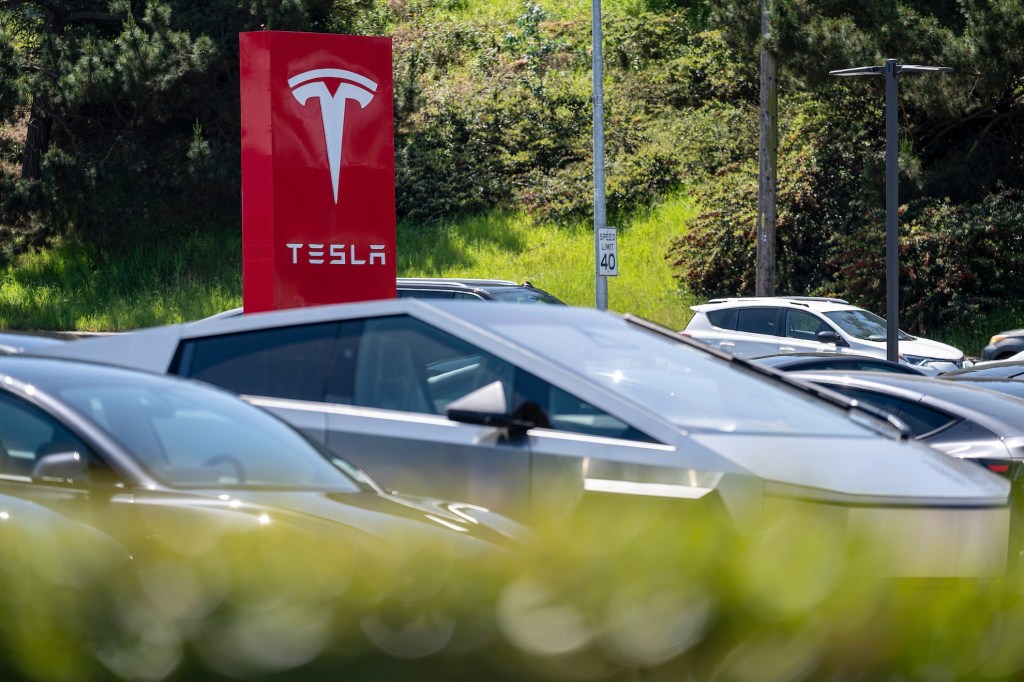In the first quarter of 2025, Tesla reported a significant decline in its financial performance, with net income dropping 71% to $409 million compared to the same period in the previous year. This downturn is attributed to a combination of factors, including reduced vehicle sales, intensified competition in the electric vehicle (EV) market, and growing public disapproval of CEO Elon Musk’s political engagements.
Declining Sales and Revenue
Tesla’s revenue for the quarter stood at $19.3 billion, marking a 9% decrease from the prior year. The company delivered approximately 337,000 vehicles during this period, representing a notable decline from previous quarters. This reduction in sales has been influenced by several elements:
– Increased Competition: The EV market has become more competitive, with numerous automakers introducing new models that challenge Tesla’s market share. Companies like BYD have surpassed Tesla in global EV sales, offering consumers a wider range of options.
– Production Challenges: Tesla faced production delays, particularly with the updated Model 3 sedan at its Fremont, California, facility. Additionally, disruptions in supply chains, such as shipping diversions in the Red Sea, have further impacted manufacturing schedules.
Impact of Elon Musk’s Political Involvement
Elon Musk’s active participation in political affairs has had a tangible effect on Tesla’s brand perception and sales:
– U.S. Market Backlash: Musk’s advisory role in President Donald Trump’s administration and his leadership of the Department of Government Efficiency, which has been associated with significant budget cuts and layoffs, have led to public protests and calls for boycotts against Tesla. This sentiment has contributed to a decline in U.S. sales.
– European Market Reaction: In Europe, Musk’s endorsement of far-right political figures, such as Germany’s Alternative for Germany (AfD) party, has alienated a portion of Tesla’s customer base. This has resulted in decreased sales and a tarnished brand image in the region.
Financial Strategies and Future Outlook
To mitigate the financial downturn, Tesla has implemented several strategies:
– Regulatory Credits: The company sold $595 million in zero-emissions tax credits during the quarter, which helped offset some of the losses. However, reliance on such credits is not a sustainable long-term solution.
– Cost-Cutting Measures: Tesla announced plans to lay off approximately 2,700 workers at its Austin, Texas, factory, as part of a broader initiative to reduce operating expenses.
Looking ahead, Tesla aims to revitalize its product lineup and regain market momentum:
– Affordable Models: The company plans to launch new, more affordable vehicle models in the second half of 2025. These vehicles will incorporate elements of Tesla’s next-generation platform and will be produced on existing manufacturing lines, facilitating a smoother production process.
– Autonomous Vehicles: Tesla continues to invest in autonomous driving technology, with plans to introduce cybercabs—self-driving taxis—by June 2026. This initiative is part of Tesla’s broader strategy to diversify its offerings and tap into emerging markets.
Challenges and Considerations
Despite these initiatives, Tesla faces ongoing challenges:
– Tariffs and Trade Policies: The current U.S. administration’s tariffs, particularly those targeting Chinese imports, have disrupted Tesla’s supply chains and increased production costs. Musk has expressed concerns over these trade barriers and their impact on the company’s operations.
– Brand Rehabilitation: Rebuilding Tesla’s brand image in the wake of Musk’s political controversies will require concerted efforts. The company must address public concerns and realign its messaging to resonate with its diverse customer base.
– Market Dynamics: The EV landscape is rapidly evolving, with competitors offering innovative and cost-effective alternatives. Tesla must accelerate its innovation cycles and enhance product offerings to maintain its competitive edge.
Conclusion
Tesla’s first-quarter performance in 2025 underscores the complex interplay between corporate leadership, political involvement, and market dynamics. While the company has outlined strategies to address current challenges, the effectiveness of these measures remains to be seen. Tesla’s ability to navigate this multifaceted landscape will be crucial in determining its future trajectory in the increasingly competitive EV market.



